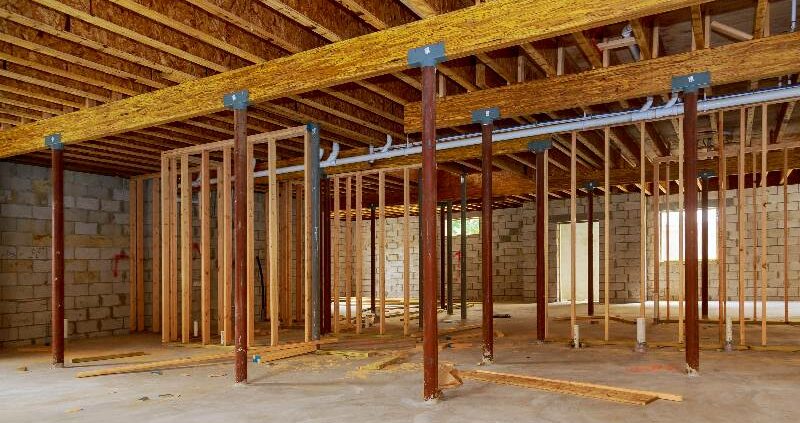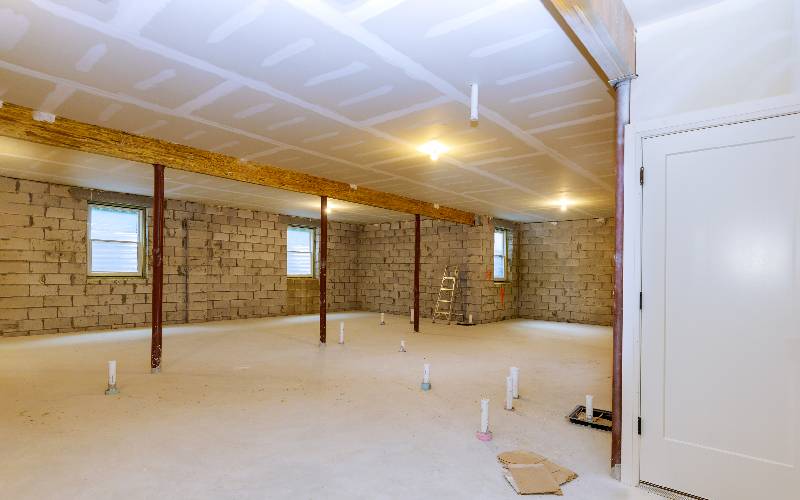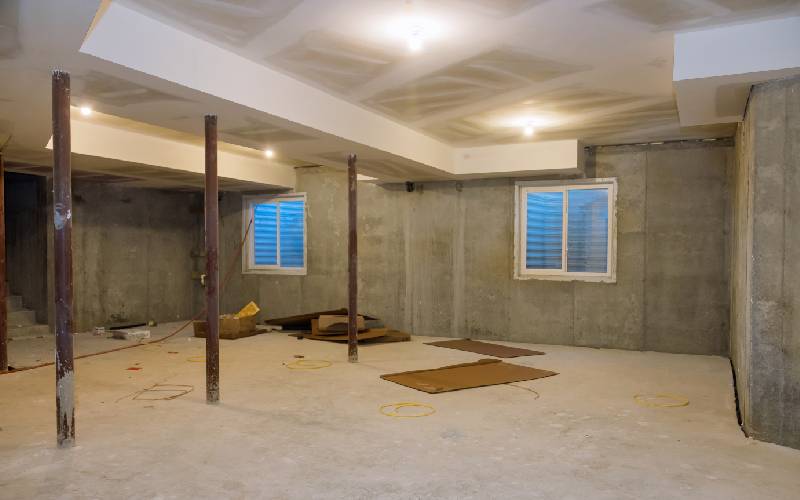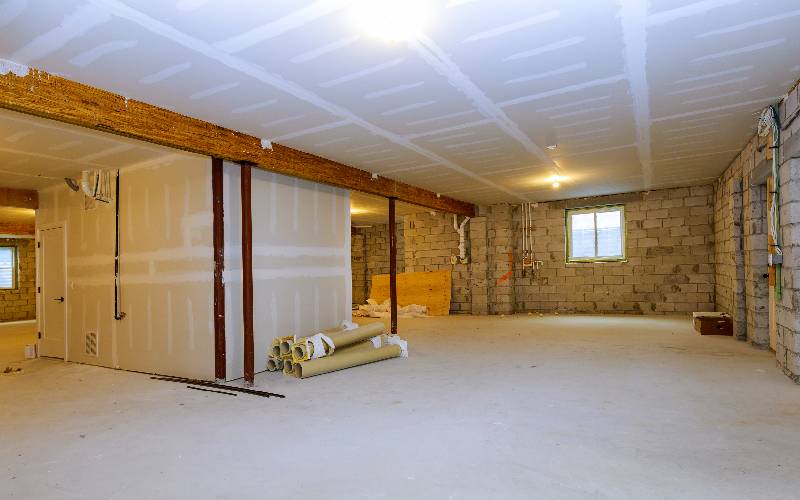Maximize Living Space: Basement Renovation Ideas
Why Renovate Your Unfinished Basement?
Ah, the basement. That often-neglected area of your home where holiday decorations and old exercise equipment go to gather dust. But what if I told you that a basement renovation could transform this unused space into a functional and inviting living area? Let’s explore the endless possibilities.
What’s the Real Potential of Your Basement Space?
Think of your basement as more than just a subterranean storage unit; it’s a blank canvas teeming with possibilities. From a cozy family room where movie nights come to life, to a state-of-the-art home theater that rivals any cineplex, or even a personal gym where you can break a sweat in privacy—your basement can be whatever you dream it to be. The cornerstone of a successful basement renovation is a vivid imagination. So, let your creativity run wild and envision a space that not only meets your needs but also elevates your lifestyle.
How to Start Your Basement Renovation Project: Planning and Budgeting
Embarking on a basement renovation without a plan is like setting sail without a compass—you might drift aimlessly and end up nowhere. First things first, you’ll want to sketch out a floor plan. This doesn’t have to be a professional blueprint; even a simple hand-drawn layout will do. Identify where you’d like to place key elements like furniture, fixtures, and electrical outlets.
Next, compile a list of materials you’ll need. This could range from drywall and paint to specific types of flooring like tile or laminate. Don’t forget to include smaller items like screws, nails, and light fixtures.
Budgeting is the backbone of any renovation project. Determine how much you’re willing to invest in transforming your basement. Keep in mind that going over budget is a common pitfall in renovation projects, so add a contingency fund of around 10-20% for unexpected costs. Once you have a budget, you can decide whether to DIY or hire professionals for certain tasks.
Maximize Space: Is an Open Floor Plan Right for You?
An open floor plan isn’t just a design trend; it’s a strategic way to maximize your basement space. By eliminating unnecessary walls, you create a sense of flow and openness that can make even a compact basement feel like a grand hall. But how do you know if it’s the right choice for you?
First, consider your lifestyle and how you intend to use the space. If you envision a multi-purpose area that serves as a game room, a home office, and a guest bedroom, an open floor plan offers the flexibility to seamlessly transition between these functions.
Second, think about the aesthetic you’re aiming for. Open floor plans lend themselves well to modern, minimalist designs where each element—from furniture to fixtures—serves both a functional and decorative purpose.
Lastly, don’t forget about the practical aspects. Open floor plans can be easier to light, heat, and cool, which could result in energy savings in the long run. However, the lack of walls means less privacy and potentially more noise carryover.
Weigh the pros and cons carefully to determine if an open floor plan aligns with your vision for your basement renovation.
Floor Matters: What Flooring Options Best Suit a Basement Remodel?
Choosing the right flooring for your basement remodel is like picking the perfect pair of shoes—it needs to be stylish yet functional. Let’s break down some popular options:
- Tile: If you’re concerned about moisture or plan to install a kitchenette or mini-bar, tile is a solid choice. It’s water-resistant and easy to clean. Plus, with a variety of designs and textures, you can achieve any look from rustic to contemporary.
- Carpet: Craving a cozy vibe? Carpeting can add a layer of warmth and sound insulation, making it ideal for home theaters or playrooms. However, it’s less forgiving when it comes to spills and moisture.
- Laminate: This is a budget-friendly option that mimics the look of hardwood without the hefty price tag. It’s also relatively easy to install yourself if you’re looking to save on labor costs.
- Vinyl Planks: These offer a balance of durability and style. They’re water-resistant and come in a variety of designs, making them versatile enough for almost any basement setting.
- Concrete: If you’re going for an industrial or modern aesthetic, consider polishing your existing concrete floor. It’s the most budget-friendly option and can be jazzed up with area rugs for added warmth.
Your choice will ultimately depend on your lifestyle needs and the function of your newly remodeled basement space.
Built-In Brilliance: How Can Built-In Cabinets Enhance Storage Space?
When it comes to storage, built-in cabinets are the unsung heroes of space optimization. But they offer more than just a place to stash your stuff; they can be a design feature in their own right. Here’s how:
- Customization: Unlike freestanding shelves or cabinets, built-ins can be customized to fit your space perfectly. Got an awkward nook or a low ceiling? No problem. Built-ins can be designed to fit any dimension.
- Aesthetic Appeal: With a variety of materials and finishes, built-in cabinets can be tailored to match your decor. Whether you prefer a rustic wood finish or sleek, modern glass doors, there’s a style for you.
- Multi-Functionality: Think beyond traditional storage. Built-in cabinets can serve as bookshelves, wine racks, or even a hidden fold-down guest bed. The possibilities are limited only by your imagination.
- Increased Home Value: Quality built-in storage solutions are a selling point that can increase your home’s value. It’s an investment that pays off in both functionality and financial returns.
Storage Solutions: How to Make the Most of Unused Basement Space?
If you’ve been using your basement as a catch-all for clutter, it’s time to rethink that strategy. Unused basement space is like an untapped goldmine for storage solutions. Here’s how to strike it rich:
- Under-Stair Closets: That space under your basement stairs? It’s prime real estate for a closet or a series of pull-out drawers. It’s an ideal spot for storing seasonal items like holiday decorations or winter gear.
- Built-In Shelving: Custom-built shelving units can transform a barren wall into a functional storage hub. Design them to fit awkward spaces or corners, and you’ve got yourself a bespoke storage solution.
- Ceiling Racks: Don’t forget to look up! The ceiling can offer valuable storage space for items you don’t frequently use. Install hanging racks for bicycles, kayaks, or even a net for sports equipment.
- Rolling Carts: For items you need to access regularly, consider using rolling carts. They can easily be tucked away in a closet or under a worktable when not in use.
- Pegboards and Hooks: These aren’t just for the garage. A well-placed pegboard can organize tools, craft supplies, or even pots and pans if you’re setting up a basement kitchen.
By maximizing your storage options, you’ll not only declutter your space but also make it more functional and inviting.
Ventilation and Lighting: How to Keep Your Basement Living Quarters Fresh and Bright
A basement doesn’t have to feel like, well, a basement. With the right ventilation and lighting, you can turn it into a comfortable living space that you’ll actually want to spend time in.
- Ventilation: Proper air circulation is crucial for keeping your basement fresh and free from musty odors. Consider installing an exhaust fan or even a dehumidifier to control moisture levels. If your basement has windows, make sure they’re operable and consider adding window fans for extra airflow.
- Recessed Lighting: This type of lighting is a game-changer for basements with low ceilings. Recessed lights are installed into the ceiling itself, providing ample light without taking up headroom.
- Natural Light: If your basement layout allows, consider enlarging existing windows or adding new ones. Window wells can also be a great addition, as they allow more light to enter while providing an emergency exit.
- Mirrors and Light Colors: To amplify the effect of natural and artificial light, use mirrors strategically and opt for light-colored walls and decor. This will make the space feel brighter and more open.
- Task Lighting: If your basement will serve multiple purposes, like a workspace and a lounge area, consider installing task lighting in those specific zones. This could be a pendant light over a bar area or adjustable wall sconces near a reading nook.
Pest Control: How to Keep Your Dream Basement Pest-Free?
Sharing your newly minted basement with pests is like inviting party crashers to a VIP event—definitely not on the guest list. So, how do you ensure your basement stays critter-free? Here’s a comprehensive guide:
- Seal the Cracks: The first line of defense is to seal any cracks or holes in the walls, floors, and around windows and pipes. Silicone caulk works well for this purpose.
- Proper Drainage: Ensure your basement has adequate drainage to prevent water accumulation, a magnet for pests. Install a sump pump if you don’t already have one.
- Chemical Barriers: Consider applying a chemical barrier around the perimeter of your basement. These are usually safe for pets and humans but lethal to common pests like ants and spiders.
- Humidity Control: Pests love damp environments. A dehumidifier can help maintain a dry atmosphere, making it less inviting for pests.
- Regular Inspections: Make it a habit to inspect your basement regularly for signs of pest activity. Look for droppings, chew marks, or damaged food packages.
- Traps and Baits: As a last resort, use traps and baits designed for the specific pests you’re dealing with. However, these are more effective as a short-term solution.
Get a Free Consultation: When Should You Seek Professional Help?
Embarking on a basement renovation is exciting, but it can also be overwhelming. If you find yourself in a maze of decisions and aren’t sure which path to take, it might be time to call in the cavalry. Here’s when you should consider a free consultation:
- Initial Planning Phase: If you’re struggling with the layout or design, a professional can provide insights that you might not have considered.
- Budget Concerns: If you’re unsure how to allocate your budget effectively, a consultation can provide a clearer picture of where to invest for the best ROI.
- Specialized Projects: For complex installations like home theaters or wine cellars, expert advice can be invaluable.
- Permit and Regulation Confusion: If you’re lost in the labyrinth of building codes and permits, a professional can guide you through the legal maze.
- Final Touches: Sometimes you need a fresh pair of eyes to give your project the finishing touches it deserves.
Your Livable, Loveable Basement Awaits
With the right planning, a touch of creativity, and a sprinkle of hard work, your basement renovation project can turn that forgotten room into the most popular spot in the house.
By following these tips and tricks, you’re well on your way to maximizing the potential of your basement. Whether you’re installing new fixtures, laying down tile, or adding a built-in cabinet, each step brings you closer to realizing your dream basement. So why wait? It’s time to renovate and make your basement the living area you’ve always wanted.








Remodeling a basement is both the most challenging and exciting task. My basement serves as my home gym, while in my friend’s house, she transformed hers into a large closet for herself.